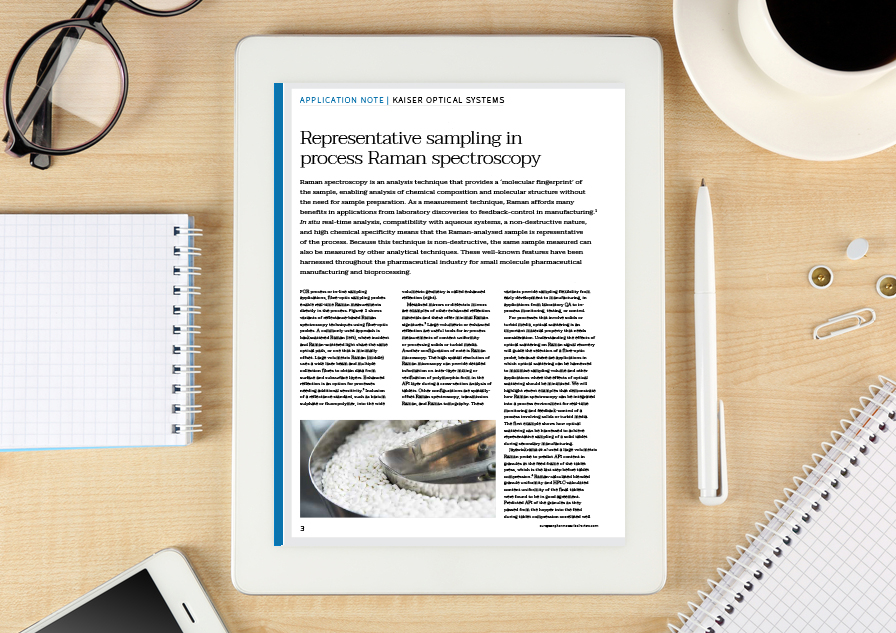Application note: Representative sampling in process Raman spectroscopy
Posted: 13 December 2017 | Kaiser Optical Systems | No comments yet
Raman spectroscopy is an analysis technique that provides a “molecular fingerprint” of the sample, enabling analysis of chemical composition and molecular structure without sample preparation..
As a measurement technique, Raman imparts many benefits in applications from laboratory discoveries to feedback-control in manufacturing.
In situ real-time analysis, compatibility with aqueous systems, non-destructive nature, and high chemical specificity means that the Raman-analysed sample is representative of the process. Because Raman is a non-destructive technique, the same sample measured by Raman can also be measured by other analytical techniques.
These well-known features have been harnessed throughout the pharmaceutical industry for small molecule pharmaceutical manufacturing and bioprocessing.
This Application Note is restricted - login or subscribe free to access


Why subscribe? Join our growing community of thousands of industry professionals and gain access to:
- bi-monthly issues in print and/or digital format
- case studies, whitepapers, webinars and industry-leading content
- breaking news and features
- our extensive online archive of thousands of articles and years of past issues
- ...And it's all free!
Click here to Subscribe today Login here
Related content from this organisation
- Expert View: Beyond API monitoring: in‑line Raman spectroscopy for bioprocess monitoring and control
- Application Note: Representative sampling of solids and turbid media in process raman spectroscopy
- Scientific Poster & Whitepaper Gallery 2018
- Scientific Poster: Raman spectroscopy technologies enabling scalable process control in bioprocessing
- Kaiser Optical Systems, Inc. receives 2017 Aspen Award for the advancement of upstream bioprocessing
Related topics
Analytical techniques, Biopharmaceuticals, Lab Equipment, Laboratory Information Management Systems (LIMS), Manufacturing, Raman Spectroscopy










